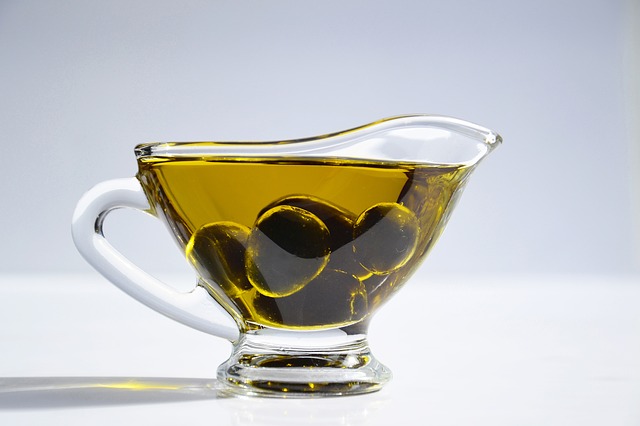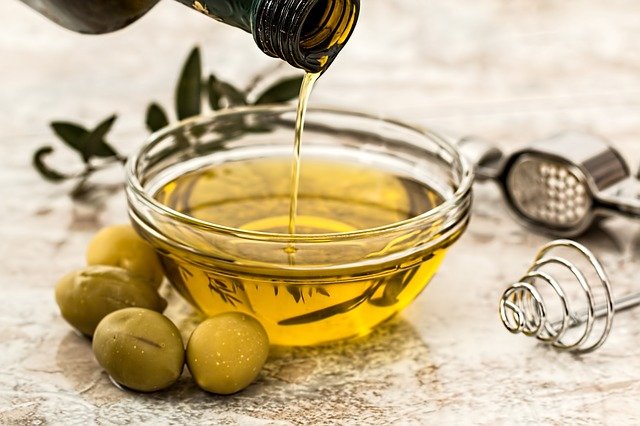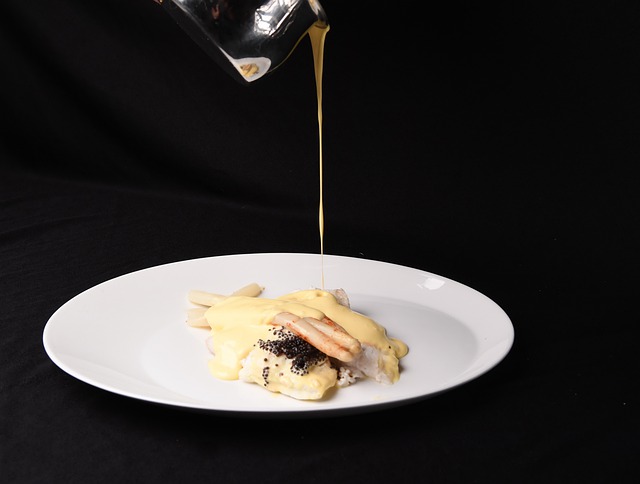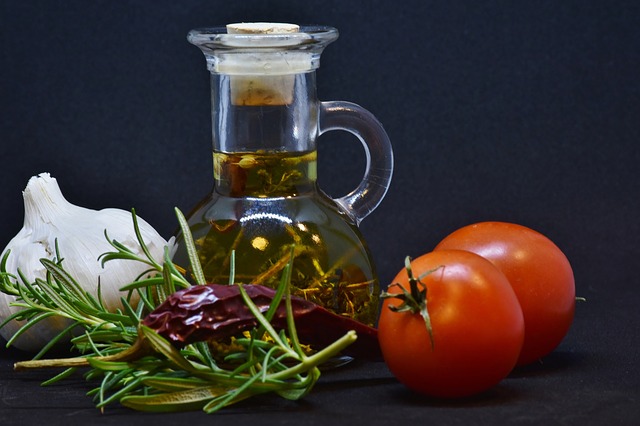Which fats should we eat and which should we avoid?
Fats are essential to our health and we need them in our diet. But not all fats are created equal. We all have heard about how good olive oil is for our health, but what about all the other fats? Butter, margarine, cold-pressed oils, highly processed oils, we have many choices when it comes to fats. Sometimes a switch to a healthier option makes all the difference in our health.
Many recipes can be adjusted to transform a bad-for-you nutritiously disastrous food item into a healthy option you can eat without guilt. Have you ever tried to make Béarnaise or Hollandaise sauce with oil instead of butter? I love sauces and do not want to eat my tuna steak without a nice Béarnaise sauce or my Eggs Benedict without Hollandaise. On top of substituting butter with oil, I also use the entire egg instead of only egg yolks and the result is just as tasty without the cholesterol overload. The sauce will of course not have the saturated fat taste but will be lighter and healthy. I make my Eggs Benedict on a toasted slice of sprouted or sourdough bread with smoked salmon (not too much because it is very high in sodium), an organic free range poached egg and a healthy extra virgin avocado oil lemony Hollandaise (for which I substitute the white wine with lemon juice), made in the blender in a few minutes.
To make a Béarnaise sauce I substitute the lemon juice with organic apple cider vinegar (about 1-2 Tablespoons, less if you like it less sour) and add ½ teaspoon of Tarragon and ¼ teaspoon of onion powder
Healthy Blender Hollandaise Sauce
Ingredients:
- 1 whole organic free range chicken egg
- ¼ to ⅓ cup extra virgin avocado oil
- 1 teaspoon mustard
- Juice of ½ lime or lemon (add more to taste)
- Salt and pepper to taste
Add egg, mustard and lime juice to the blender and blend until creamy. Start adding the oil in a slow but steady stream. The more oil you add, the thicker the sauce will be. If you add too much oil you will have a mayonnaise, but that can be remedied with a little water. Just check as you are adding oil. Season with salt and pepper to taste.
I use this same recipe to make my mayonnaise. For a spicy mayo I add roasted chili peppers (canned) or pepper flakes. I also like it with prepared horseradish or wasabi, depending on my taste of the day and what I use it for.
What is the difference between oils?
In the chart below you can see the difference between cold pressed extra virgin oils and highly refined oils. We know we should avoid highly processed foods and oils are a perfect example when it comes to the difference between highly processed and minimally processed choices. A high quality olive oil can actually help us lose weight and improve our overall appearance. I also use a high quality extra virgin avocado oil for when I do not want the strong taste of olive oil or for sautéing, because olive oil breaks up and burns when heated to higher temperatures whereas avocado oil does not. And yes, I fry and sauté without any guilty feelings.
How to eat more olive oil
Since olive oil is so good for us, how can we incorporate more of it into our diet? Here is a quick recipe for spiced olive oil, which I always have in my kitchen.
Spiced Olive Oil
Ingredients:
- 1 cup high quality extra virgin olive oil
- 2 crushed garlic cloves
- 1 Tablespoon dried Italian seasoning (or combine your favorite dry seasonings)
- ¼ teaspoon salt
- ¼ teaspoon red pepper flakes or freshly ground black pepper
Mix it all in a covered container and store at room temperature. You can serve it in small shallow dishes for dipping toasted bread (makes a great appetizer when you have company) or you can drizzle it over salads, roasted vegetables and chickpeas, use it to finish soups and stews, or drizzle on burgers and steaks. I always brush it on bread when I make sandwiches instead of using butter or margarine. Not only is this healthier, it also adds lots of flavor.
The main idea is to eliminate all unhealthy oils and just have a good quality extra virgin olive oil and a good quality extra virgin avocado oil in your kitchen. Use your olive oil unless you don’t want the strong taste in a dish or for frying and sauteing, in which case the mild flavored avocado oil might be the better choice.
I will have many other recipes which are loaded with olive oil like my favorite Spinach Pesto, Spicy Green Sauce, and more in upcoming blogs. Check my website www.foodiewithpurpose.com for new blogs.
Beware of the olive oil and avocado oil scam
Although labeled as “Extra Virgin Olive Oil” there are many low quality olive oils on the market, some are even mixed with other vegetable oils, which are so unhealthy. Avocado oils are no different. How do you know which ones are the good ones and which ones to avoid? It is – as always – not easy and some research is necessary. We also need to keep in mind that the study by UC Davis about the quality of olive oils is from 2010. The North American Olive Oil Association has published several articles about the improvements that have been made in the industry and that most olive oils on our shelves today that are marked “Extra Virgin” are exactly that. Olive oil is a confusing product and I will keep on reading reports and studies and post updates on my website if I can find convincing ones.
Recently, I visited Georgia, USA, and I found out that there are olive oil producers in the Southeastern region of the state, especially where Florida meets Georgia, where the soil is perfect for olive trees. I think that if you buy directly from the producers you cannot go wrong. It is definitely on my bucket list to visit. There are other regions in the US where olive oil is produced, but living in the Southeast Georgia olive farms are easy for me to check out. I looked on their websites and found the prices to be rather high, but probably very justified for the quality and the labor that goes into the production.
But what to do when you don’t want to break the bank? A good indicator is the taste (obviously) and recently I have bought the Italian Extra Virgin olive oil from Costco, which I am very happy with. My husband did the taste test between the Spanish and Italian imported olive oils from Costco and the Italian won.
Avocado oil is no different. I found a recent article (June 15, 2020) by Diane Nelson on the UC Davis website about a UC Davis study of avocado oils that makes the same terrifying statement about the purity of avocado oil. It states that 82% of avocado oil is rancid or mixed with other oils. I need a good quality avocado oil for its higher smoke point, so after a lot of reading and watching I am now using the Chosen Foods avocado oil, which I order in 2 liter bottles on Amazon.
I am trying new oils here or there after reading the labels and feeling confident that they come from a single reliable source (there is no guarantee unless you know the source). Next they have to pass the taste test. Many oils proudly display seals and awards on their labels, which may or may not be legitimate. That is easy to find out on the internet. A bogus seal definitely will turn me away from a product.
Omega 3 rich fatty fish is so good!
Fish, especially salmon and tuna and other fatty fish, contain a large amount of Omega 3 fatty acids which are so good for us. Fish is very versatile and can be used for many creative dishes like salmon tacos with homemade sauces, filling crepes and burritos, it can be prepared in so many ways like grilling, baking and sautéing. My go-to recipe when I am pressed for time is to take a piece of salmon out of the freezer, season it and put it, frozen as it is, in the air fryer for 15-18 minutes at 390°F. It comes out just perfect all the time and all you have to do is choose a healthy side and a tasty sauce. I usually have either a spicy green sauce or a home-made spicy mayonnaise in my fridge to go with a quickly thrown together meal. Find recipes on my website and look out for more to come!
What about butter?
In my case, I do not eat butter or consumer fatty dairy because of my cholesterol issues. If you are a perfectly healthy individual, I see no reason not to occasionally use butter, but I would only recommend 100% grass fed butter or milk and other dairy to avoid harmful additives to the animal feed, which ultimately will end up in your body. Although butter and whole milk and other dairy have certain health benefits, they will clog your arteries in the long run. These items contain a large amount of saturated fat which is best consumed in smaller amounts.
…And margarine?
Don’t eat it! Margarine usually contains trans fatty acids and is bad for our health. Margarines are highly inflammatory, increase blood cholesterol levels. According to Harvard Health there are now healthier margarine options available if you want a buttery spread without trans fats. The amounts of trans fats and saturated fats are listed on the nutrition labels as required by the FDA.
The take-away on fats
The goal is to avoid trans fats altogether and limit the intake of saturated fats. Again, the best choice is extra virgin olive oil and extra virgin avocado oil. A good way to improve our health is to avoid or limit using solid fats, for example instead of spreading margarine on your bread, dip it or brush it with a good quality oil. This switch does wonders to our bodies.
For more blogs on healthy eating and to check out healthy, tasty recipes visit my website http://www.foodiewithpurpose.com







